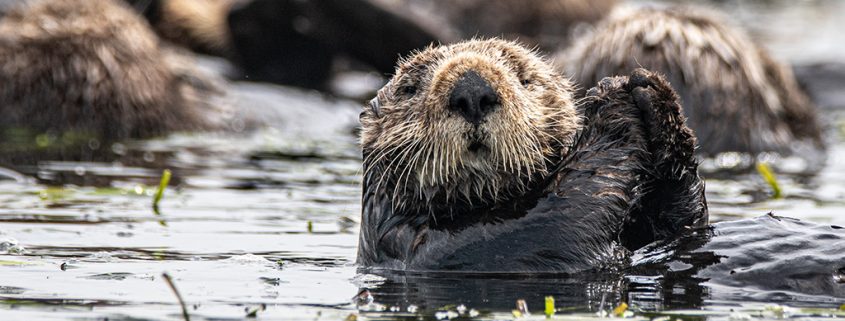Ocean Science Trust developed a final report titled “Establishing a Roadmap for Incorporating Social Science and Human Dimensions into Potential Sea Otter Reintroductions on the U.S. West Coast”. This final report synthesized scientific guidance from social scientists, stakeholder groups, and literature sources for incorporating social science and human dimension considerations into potential future sea otter reintroductions. It is intended to inform federal resource managers in future considerations of potential sea otter reintroductions to arrive at a well-informed, ethical, and equitable decision-making process.
Read the report here.

We are compiling scientific guidance for assessing and incorporating socioeconomic considerations in potential sea otter reintroductions
Final Report Now Available!
Overview
The goal of this project is to produce scientific guidance for studying and incorporating key socioeconomic considerations ahead of future sea otter reintroduction feasibility studies on the West Coast.
Background
On the U.S. West Coast, sea otters once existed continuously across coastlines in California, Oregon, Washington, and Alaska. They were extirpated from much of their native habitat following unsustainable hunting to supply the international Maritime Fur Trade. Despite decades-long recovery and conservation efforts, sea otters have not returned and recolonized Northern California and Oregon.
In January 2021, U.S. Congress approved a federal budget that included a directive to assess the feasibility of reintroducing sea otters along the contiguous U.S. West Coast. The U.S. Fish & Wildlife Service, which federally manages sea otter populations, will submit this report to Congress by the end of December 2021.
Providing Socioeconomic Scientific Guidance
Sea otters play an important role in the structure and function of kelp forest ecosystems by consuming and controlling herbivorous sea urchins; thereby, alleviating intense grazing pressure on kelp and allowing kelp to grow inhibited. Via their predation, sea otters also reduce benthic macroinvertebrates, some of which (e.g. red sea urchins, abalone) are culturally, economically, and socially important to tribal, commercial, and recreational fisheries and practices.
Many coastal communities and economies are dependent on healthy kelp forests and the marine species they support; therefore, assessing the human implications and dimensions of sea otter recovery is needed to understand the full potential, feasibility, and implications of reintroducing sea otters.
The goal of this project is therefore to provide scientific guidance for assessing and incorporating key socioeconomic considerations and factors ahead of any potential future sea otter reintroduction feasibility assessments.
Through this work we are upholding our commitment to supporting and empowering science built hand-in-hand with stakeholders, and to facilitating the use of social science in the management and stewardship of coastal resources.
Contact
Dominique Kone
Senior Science Officer
dom.kone@oceansciencetrust.org
Acknowledgements
Funding for this project is provided by the U.S. Fish & Wildlife Service




